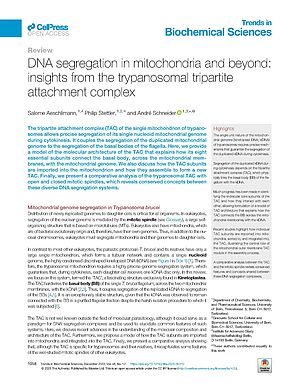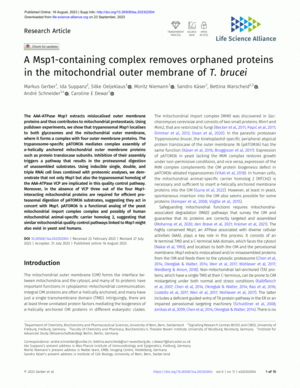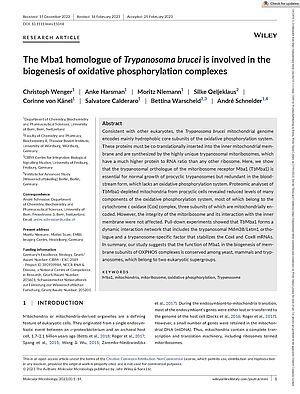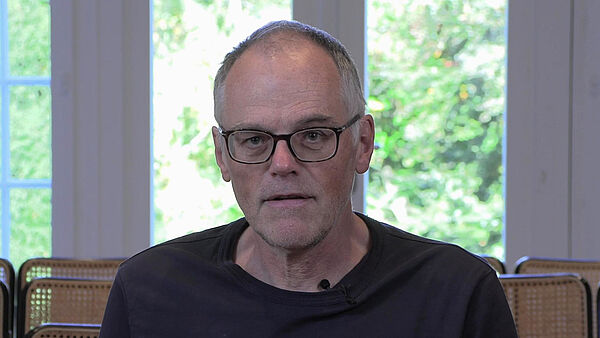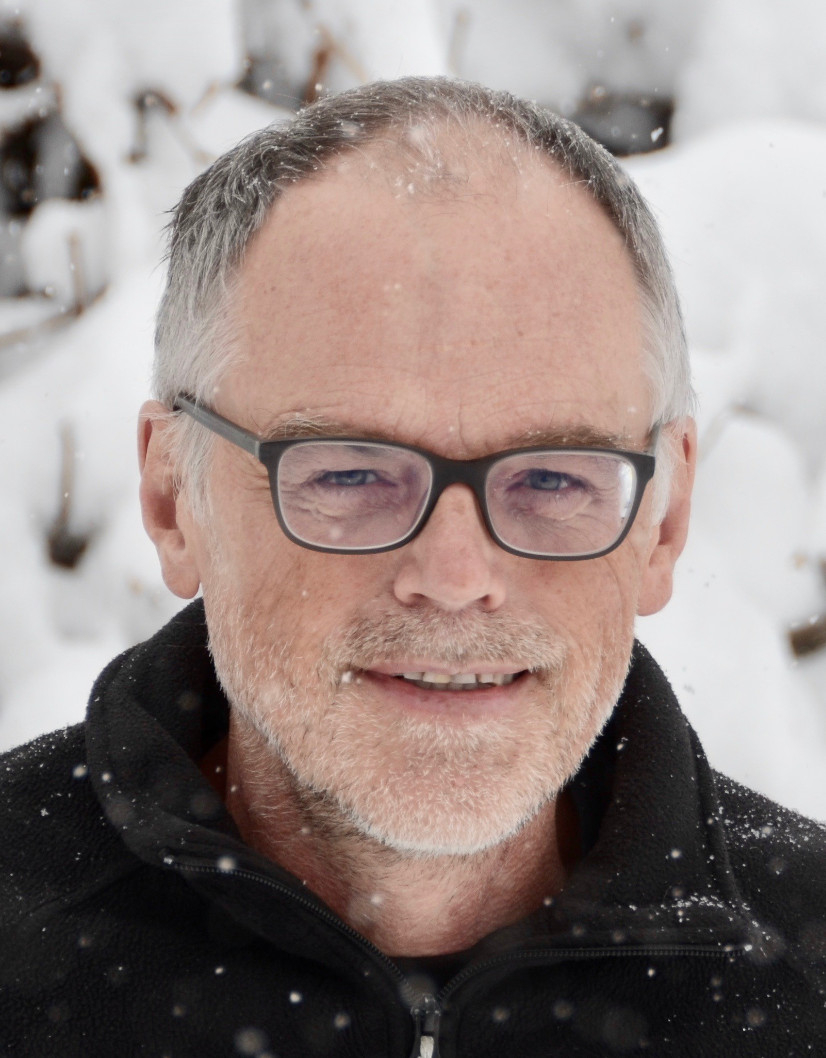
André Schneider, Dr. phil. nat.
Professor of Biochemistry
University of Bern
Born in 1960 in Solothurn, Switzerland
Studied Biology at the University of Bern
Project
Origin of Protein Translocases in Organellar Membranes
All organisms consist of either simple or complex cells. Simple cells lack internal structures, whereas complex cells contain a set of membrane-bound compartments, termed organelles, that have dedicated functions that are essential for survival. All macroscopic life, including humans, consists of complex cells that in many ways are superior to simple cells. However, proteins, the building blocks of cells, are produced outside organelles. Complex cells therefore face a huge logistic challenge: they need to transport proteins to the correct organelles and translocate them across the barrier of the organellar membranes. This process needs to be efficient and specific, since each organelle has a unique protein composition. Transport of proteins from the cis to the trans side of the corresponding organellar membranes depends on membrane-embedded molecular machines, termed protein translocases. While the function of the various protein translocases is well studied, their evolutionary history is still enigmatic. Understanding the origin of organellar protein translocases, however, is of the outmost importance, as it may provide insights into the evolution of the organelles themselves and thus into one of the most important transitions in the history of life, the origin of complex cells. For my Wissenschaftskolleg project, I plan to initiate a comparative analysis of protein translocases based on the scientific literature. More precisely, I would like to find out which parts of organellar protein translocases derive from which counterparts in simpler cells and which ones are novel inventions of complex cells. Subsequently, I would like to trace back the evolutionary history of the translocases and reveal their immutable features that are imposed by their shared function.Recommended Reading
Mani, Jan, Silvia Desy, Moritz Niemann, Astrid Chanfon, Silke Oeljeklaus, Mascha Pusnik, Oliver Schmidt, et al. (2015). “Mitochondrial Protein Import Receptors in Kinetoplastids Reveal Convergent Evolution over Large Phylogenetic Distances.” Nature Communications 6: 6646. https://doi.org/10.1038/ncomms7646.
Harsman, Anke, Silke Oeljeklaus, Christoph Wenger, Jonathan L. Huot, Bettina Warscheid, and André Schneider (2016). “The Non-Canonical Mitochondrial Inner Membrane Presequence Translocase of Trypanosomatids Con¬tains Two Essential Rhomboid-Like Proteins.” Nature Communications 7: 13707. https://doi.org/10.1038/ncomms13707.
Schneider, André (2020). “Evolution of Mitochondrial Protein Import – Lessons from Trypanosomes.” Biological Chemistry 401, no. 6–7: 663–676. https://doi.org/10.1515/hsz-2019-0444.
Colloquium, 14.02.2023
1 + 1 = 1. On the Origin of Complex Cells
All life consists of simple or complex cells. Simple cells have no internal structures and form only unicellular organisms that are called prokaryotes. Complex cells can form both unicellular and multicellular organisms referred to as eukaryotes. Eukaryotic cells are much larger than prokaryotes and contain a number of membrane-bound organelles such as the mitochondrion and the nucleus. The first prokaryotes evolved about 3.7-3.9 billion years ago, while eukary-otes evolved much later, about 1.5 billion years ago. All life that you can see with your naked eyes, including us humans, is made up of eukaryotic cells. The question of how the first eu-karyotes evolved is therefore one of the most central questions in biology.
My talk consists of three parts.
First, I will introduce the basic architectures of prokaryotic and eukaryotic cells. In addition, I will discuss the advantages and challenges of organelles, which are the defining feature of eukaryotes.
The second part of my talk will focus on how eukaryotic cells evolved and the role that the mitochondrion, the powerplant of these cells, played in the process. I will explain how a single endosymbiotic event, in which a large prokaryote engulfed a smaller prokaryote, formed the ancestor of all eukaryotes. Scenarios will be presented that can explain the adaptive ad-vantages of the early steps of the endosymbiotic event that led to the internalization of one cell into the other, as well as what late steps were required to convert the endosymbiont into a mitochondrion. It will become clear that the evolutionary origin of mitochondria is tightly linked to the differing energy metabolisms of the endosymbiont and the host cell.
In the third part of the talk, I will present some of my own research, which focuses on mito-chondrial protein import. During its conversion into a mitochondrion, most of the genome of the endosymbiont was transferred to the host cell genome. In order for the mitochondrion to still have access to the proteins that were now encoded by the host cell, it had to evolve pro-tein import systems. Thus, it is the evolution of these import systems that marks the boundary between the endosymbiont (the ancestor of the mitochondrion) and a true organelle that is fully integrated into its host cell. The question of how mitochondrial protein import evolved is therefore central for the understanding of the origin of eukaryotic cells. I will show how a comparative analysis of yeast and the parasitic trypanosomes, which revealed major differ-ences between the mitochondrial protein import systems of the two organisms, can help us to get a better understanding of how eukaryotes evolved.
Publications from the Fellow Library
Schneider, André (Heidelberg, 2023)
A Msp1-containig complex removes orphaned proteins in the mitochondrial outer membrane of T. brucei
Schneider, André (Oxford [u.a.], 2023)
Schneider, André (Heidelberg, 2019)
Eine Translokase für Makromoleküle in Mitochondrien von Trypanosomen
Schneider, André (Oxford, 2017)
Mitochondrial protein import in trypanosomes : expect the unexpected
